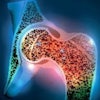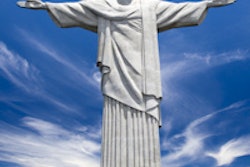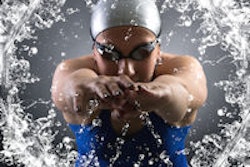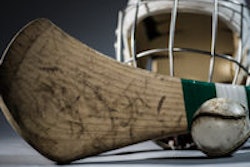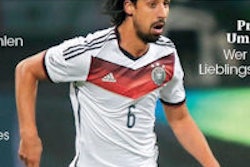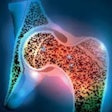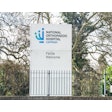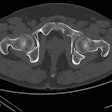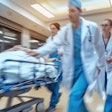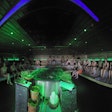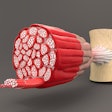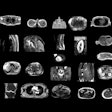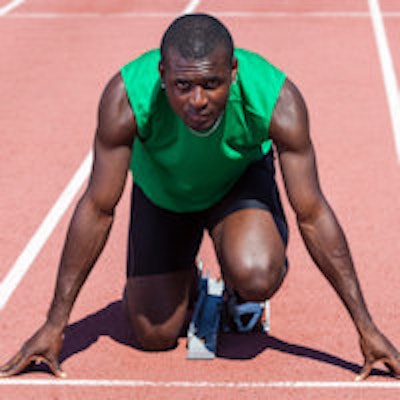
From a debilitating abscess to the negotiation of a medication regimen for an athlete adhering to Ramadan, the volunteers at the 2014 Commonwealth Games radiology clinic are primed to expect the unexpected, with the 12-day international sporting event promising to test the all-round clinical skills of the medical staff manning the service.
The opening ceremony takes place on 23 July at Celtic Park in Glasgow, normally home to Celtic, Scotland's leading football club. The games run until 3 August 2014, and events will feature 17 different sports. More than 6,500 athletes and officials from 71 different nations and territories are due to take part, including the multiple Olympic gold medalists Usain Bolt and Mo Farah.
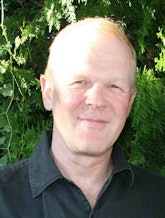 Athletes' sole aim in life is to win a gold medal, and they're very driven people, according to Dr. David Ritchie.
Athletes' sole aim in life is to win a gold medal, and they're very driven people, according to Dr. David Ritchie."It's a novelty for me to lead the radiology service at such a large sporting event, but I'm enjoying it so far and I am confident we can deliver a first class service," said Dr. David Ritchie, musculoskeletal radiologist at the Western Infirmary, Greater Glasgow and Clyde Hospitals National Health Service (NHS) Trust in Glasgow, U.K.
He explained how the success of the London 2012 Olympic radiology service has served as an excellent model for the imaging suite in the Commonwealth Games Polyclinic, adding that fellow radiologist, Dr. Phil O'Connor, consultant radiologist from Leeds, who led the Olympic service, advised him it was never too early to start preparations.
Although organization and procurement of equipment proceeded satisfactorily, there were staffing issues. There was a shortage of local musculoskeletal radiologists, but fortunately seven musculoskeletal radiologists from England volunteered to make up the required number of 13 radiologists. There were also problems with radiographic staffing, but similarly, more volunteers came forward to make up a total of 26. The clinic also benefits from a number of applications specialists.
Impact of cultural diversity
Ritchie and his colleagues opened the clinic 10 days prior to the start of the games. Athletes and their teams arrive early to train and ensure they're fully prepared for events they have spent their lives training for. The team is imaging athletes from a variety of nationalities, cultures, and religions, and has already seen an athlete with gout who was adhering to the Islamic fasting rules of Ramadan. The patient had been prescribed anti-inflammatory and analgesic agents, but due to Ramadan he declined to follow his medication schedule during daylight hours.
"At this time of year in Glasgow, it's light very early in the morning until very late into the evening, so the athlete has a long day of fasting and not taking his medication. Yet, he still wants to perform and I'm unsure how that is going to affect his performance," he said.
Ritchie noted he has seen around 20 patients who have been injured during training. He explained that not all cases are typical of sports injuries and that sometimes they had to deal with the unexpected.
"One patient came in yesterday with a large subcutaneous abscess in her leg which we scanned, drained under imaging guidance, and sent off specimens for culture. She is now on intravenous antibiotics and if the abscess heals will hopefully be able to compete in 10 days time," he said. "We have to be able to handle a variety of unusual injuries as well as usual traumatic and more typical sports injuries ... patients already carry intermittent injuries, but once they intensify their training in the lead up to the games these injuries often recur -- we also need to determine old from new injuries."
However, in the run to the games they have seen several typical sports injuries, including a fatigue stress fracture in the heel of a long distance runner and a case of iliotibial band syndrome in the knee of a hockey player (see images).
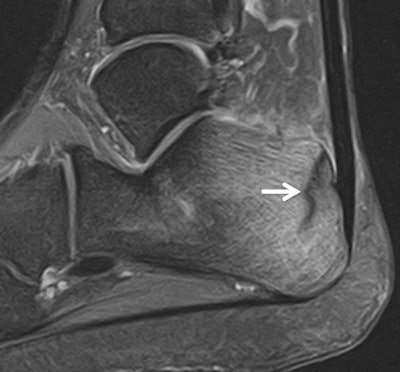 Male long-distance runner, 22, with a two-week history of heel pain. Sagittal T2-weighted fat-saturated image (Toshiba, Elan 1.5-tesla) shows linear hypointensity (arrow) in the posterior calcaneus and diffuse high signal intensity in the adjacent marrow in keeping with a recent incomplete fatigue stress fracture with surrounding marrow edema. All images courtesy of Dr. David Ritchie.
Male long-distance runner, 22, with a two-week history of heel pain. Sagittal T2-weighted fat-saturated image (Toshiba, Elan 1.5-tesla) shows linear hypointensity (arrow) in the posterior calcaneus and diffuse high signal intensity in the adjacent marrow in keeping with a recent incomplete fatigue stress fracture with surrounding marrow edema. All images courtesy of Dr. David Ritchie.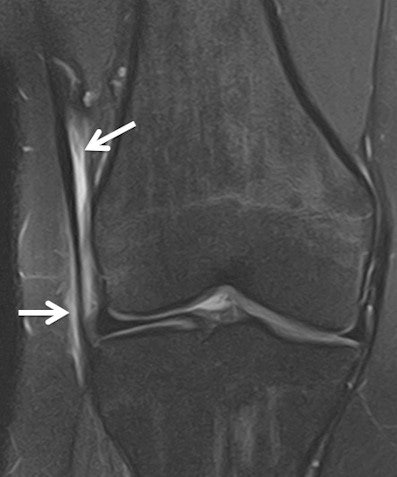 Female hockey player, 18, with anterolateral knee pain for two days. Coronal T2-weighted fat-saturated image (Toshiba, Elan 1.5-tesla) shows high-signal intensity around the iliotibial band on the lateral aspect of the knee in keeping with iliotibial band syndrome. This is thought to be caused by friction of the band as it repeatedly crosses the lateral condyle during flexion and extension.
Female hockey player, 18, with anterolateral knee pain for two days. Coronal T2-weighted fat-saturated image (Toshiba, Elan 1.5-tesla) shows high-signal intensity around the iliotibial band on the lateral aspect of the knee in keeping with iliotibial band syndrome. This is thought to be caused by friction of the band as it repeatedly crosses the lateral condyle during flexion and extension.Reflecting on the robust mentality of the elite athlete, Ritchie related the story of one judo competitor who dislocated her elbow six years previously but who has overcome this injury and competed at a very high level. She then presented with an acute, chronic injury. MRI showed fragments of bone avulsed from both epicondyles, scarred medial and lateral collateral ligaments, as well as partial tears of the common flexor and extensor tendons, joint effusions, and intra-articular bodies. There was a lot of post-traumatic change in the elbow, but she is still performing.
"I believe if she carries on, she'll do more damage, but we can only tell the athletes what's going on and possibly provide some short-term anesthetic relief so they can participate in their chosen event," he said. "The problem is that the Corinthian spirit kicks in and even with significant injury, they are likely to compete anyway. Sometimes, this is the only chance the athlete may have to win a gold [medal]. Their sole aim in life is to win a gold -- they're very driven people."
Despite the fiercely competitive spirit during events, volunteer radiographer Diana Davison comments on the overall upbeat and communal atmosphere that permeates the Athletes' Village, where the polyclinic is housed.
"It's hard to describe, but a certain atmosphere emerges with all these many people milling about -- nobody cares where they are from in the world, people are having a good time. We see everyone getting on. Of course they are competing, but not in the [Athletes'] Village," she pointed out. "I love to see the flags and mascots come out. It's an incredible feeling of community and that's what I enjoy most. I feel privileged to be here."
Lessons from London 2012
The 2014 Commonwealth Games is the largest sporting event ever held in Scotland, and Ritchie has wisely called on findings from the 2012 Olympic Games to provide a model of expected numbers of patient and examinations.
Based on statistics published by Leeds-based Olympic radiology fellow, Dr. Sarath Bethapudi, who is also participating at the Glasgow event, Ritchie said that he has formulated his projections on half the number of 1,711 diagnostic and interventional procedures performed at the London Olympics polyclinic. Effectively, the expected caseload for the Commonwealth Games breaks down as follows: 415 MR exams, 170 ultrasound scans, 200 x-ray examinations, 25 CT scans, 22 ultrasound-guided injections, and 14 CT-guided injections.
These figures include a patient breakdown of 75% athletes, 20% team, and 4% volunteers.
"We will prioritize the precompetition athletes, but all athletes and trainers have access to the service," Ritchie confirmed. "Olympic figures showed that the majority of radiological investigations were in track and field athletes (35%), followed by hockey (6.2%), and weightlifting with less than 5%, then boxing, wrestling, and swimming amongst others below that. The MR scans were mainly for muscle tears, cartilage tears in knee, hip, and shoulder as well as deep tendons and ligaments in the spine."
Based on Olympic figures, the imaging service may be required to conduct up to 27 MR scans per day during competition days.
"This is challenging because scanning at half-hour intervals all day and through the evening means we'll do around 24 without breaks," said Richie, who thinks the majority of injuries will be to the lower limb in runners, hurdlers, steeplechasers, and long-jumpers; in the 2012 Olympics, 70% of injuries were lower extremity, 15% upper extremity, and 15 % spine. "We expect to see similar, but there are some differences. For example, the Commonwealth Games in the spread of injury types. For example, the Commonwealth Games have rugby so we expect to see both lower and upper limb injuries here including shoulder dislocations."
Staffing schedules are also modeled on the Olympics. Radiologists and radiographers will work across two shifts: an early shift of 8 a.m. to 4 p.m., and a late shift of 2 p.m. to 10 p.m. The overlapping hours will double the number of radiologists during the busy period when they can cut through the workload, perform guided interventional techniques, and hold team meetings.
Imaging equipment
Toshiba Medical Systems are supplying all the imaging equipment, as well as application specialists, at the Commonwealth Games. The equipment comprises an MR system (Elan 1.5-tesla magnet), an Aquilion CT scanner with fluoroscopy, two Toshiba ultrasound scanners (plus one spare), and a mobile x-ray system.
"These are within 15 meters of the backdoor of the polyclinic, with changing units inside the vans. These are linked to PACS in the polyclinic so we can report promptly," he said.
Carestream Health has provided the PACS, plus three reporting stations with voice recognition (VR), and one computer with VR in the ultrasound room, along with on-site support.
"There are two reporting rooms, one has two workstations and this is destined to be a quiet working room for two radiologists; there is one further reporting room that can also be used as a meeting room for case discussions with medical teams from the various countries," said Ritchie, whose team plans to document their experiences at the Commonwealth Games and publish statistics on examinations and interventions performed, comparing the experience with that of the 2012 Olympics.
All equipment and facilities are housed in the polyclinic, which resembles a mini-hospital, according to Ritchie. Modeled on previous games, it has emergency and sports physicians, reception area, physiotherapy, pharmacy, massage, dentistry, consulting, and treatment rooms.
There are two different patient categories entering the polyclinic, depending on whether they have a team doctor or not. Half of the teams will attend the polyclinic to see a sports doctor because they do not have a sports doctor of their own. The sports doctor will then decide if imaging is required and plan further management. If an athlete has his or her own team doctor, as the larger teams do, then that doctor will initiate the imaging request, but the polyclinic sports doctors will have to agree with and countersign the request. Reports will then be issued to the team doctors, who will organize further management.



